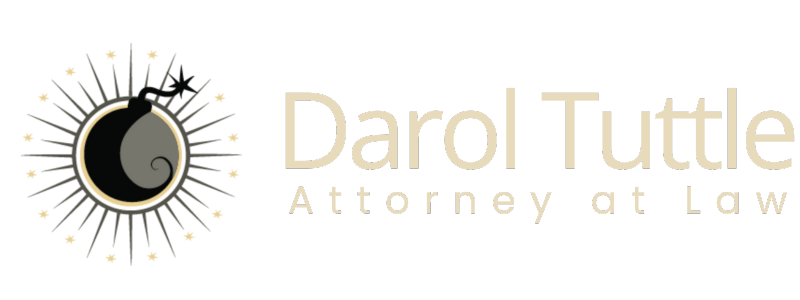The term “estate plan” refers to the arrangement of an individual’s assets and liabilities to ensure their efficient management during their lifetime and also upon their demise. The basic ingredients of a basic estate plan consists of trusts, and/ or a will. Lawyers refer to an estate plan as “trust-based” or “will-based”, implying these two things, a trust or a will, are mutually exclusive. This is true in basic estate plans in which the goal is basic estate transfer. However, complex asset protection plans may consist of several trusts, each serving different purposes, a Will (in any legal plan, there can never be more than one will), agreements as to disposition of assets, and even family partnerships and limited liability companies.
This article clears up the confusion by defining each, clarifying ambiguous terminology, and comparing the two. Let’s start with a simple question.
What is a trust?
A trust in estate planning is a legal arrangement where one party, known as the grantor or trustor, transfers assets to another party, the trustee, to manage and hold for the benefit of a third party, the beneficiary. Note that these terms, “trustor”, “trustee”, and “beneficiary”, refer to job descriptions or roles and, in some cases, these roles can be filled by the same person. Most notably, a revocable living trust is a probate avoidance trust in which the trustor appoints herself trustee and she is the lifetime beneficiary. That is, while she is alive in her capacity as Trustor, she can distribute income or principal to as trustee herself as the beneficiary. This, plus the retention of the power to revoke the trust, renders this trust ineffective in terms of asset protection, tax avoidance, and Medicaid planning.
Often, you will hear trusts described as “living” or “testamentary.” A living trust simply means that the trust became effective when the trustor was still living. Unfortunately, one type of trust created while the trustor is living has monopolized the title “living trust”, implying that creating a trust while you are alive is unique. It is not.
Living Trusts you’ve never heard of but actually do something
The following list contains a few of the many living trusts you likely have never heard of:
Qualified Personal Residence Trust (QPRT)
A Qualified Personal Residence Trust (QPRT) transfers a personal residence to beneficiaries while retaining the right to live in it for a set period. The main benefit is the reduction in the value of the estate for gift tax purposes.
d4A Trust (Special Needs Trust)
A d4A Trust (Special Needs Trust) is established for disabled individuals under age 65 using their own assets. This trust preserves eligibility for Medicaid and SSI while allowing for additional needs to be met.
d4C Trust (Pooled Special Needs Trust)
A d4C Trust (Pooled Special Needs Trust) is established for disabled individuals, where funds are pooled but accounted for separately. It maintains Medicaid eligibility and offers professional management of trust assets.
Pet Trust
A Pet Trust provides for the care and maintenance of a pet after the owner’s death or incapacity. This ensures that pets are cared for according to the owner’s wishes.
Irrevocable Life Insurance Trust (ILIT)
An Irrevocable Life Insurance Trust (ILIT) holds life insurance policies outside of the estate. The main benefit is avoiding estate taxes on the insurance proceeds.
Charitable Remainder Trust (CRT)
A Charitable Remainder Trust (CRT) provides income to beneficiaries for a specified period, with remaining assets going to charity. This trust offers an income tax deduction and potential avoidance of capital gains tax.
Charitable Lead Trust (CLT)
A Charitable Lead Trust (CLT) pays income to a charity for a specified term, with remaining assets going to other beneficiaries. The main benefit is reducing the taxable estate and providing immediate charitable contributions.
Grantor Retained Annuity Trust (GRAT)
A Grantor Retained Annuity Trust (GRAT) pays annuity to the grantor for a specified term, with remaining assets passing to beneficiaries. It minimizes gift taxes and transfers asset appreciation out of the estate.
Special Needs Trust (SNT)
A Special Needs Trust (SNT) provides for a disabled beneficiary without disqualifying them from government benefits. The main benefit is maintaining eligibility for public assistance programs.
Medicaid Asset Protection Trust (MAPT)
A Medicaid Asset Protection Trust (MAPT) protects assets from being counted for Medicaid eligibility. This trust qualifies for Medicaid while preserving assets for heirs.
Spousal Lifetime Access Trust (SLAT)
A Spousal Lifetime Access Trust (SLAT) allows one spouse to create a trust benefiting the other while removing assets from their combined estates. It provides financial support to the spouse and reduces estate taxes.
Intentionally Defective Grantor Trust (IDGT)
An Intentionally Defective Grantor Trust (IDGT) is treated as owned by the grantor for income tax purposes but not for estate tax purposes. This trust transfers wealth without triggering gift or estate taxes.
Does revocability matter?
That a revocable living trust is revocable and amendable is touted as a significant feature. It is this feature that renders the revocable living trust a simple estate transfer trust, Its utility is so limited, all government agencies disregard them as simple pass through structures as if they do not exist, most notably the Internal Revenue Service. All trusts, including the revocable living trust, become irrevocable when the trustor dies or even becomes incapacitated. Further, most states allow irrevocable trusts to be easily revoked and, as a practical matter, families that use a revocable trust as the basis of their estate plan, rarely, if ever, revoke them. The benefit, if any, of a living trust is that, like all trusts, a living trust provides restrictions on the distribution of the assets within the trust when passed to the second generation.
What is a Will?
A will, also known as a Last Will and Testament, is a legal document that outlines an individual’s wishes regarding the distribution of their property and the care of any minor children after their death. It is a crucial component of estate planning, ensuring that the individual’s assets are distributed according to their preferences and that their dependents are cared for as specified.
Wills contain robust estate and asset protection trusts, called testamentary trusts. A testamentary trust is a type of trust created through an individual’s will, taking effect only upon their death. Unlike living trusts, which are established and operational during the grantor’s lifetime, testamentary trusts are activated posthumously, according to the specific terms and conditions outlined in the will. These terms detail the beneficiaries, the trustee, and how the assets are to be managed and distributed. In addition, only a will can create an asset protection trust for the surviving spouse that is not subject to Medicaid spend-down rules.
One common example of a testamentary trust is the Credit Shelter Trust (CST), also known as a bypass trust or family trust. This trust is designed to minimize estate taxes for married couples. When the first spouse passes away, an amount up to the estate tax exemption is placed into the trust. The surviving spouse can benefit from the income generated by the trust assets during their lifetime, but the principal remains in the trust. This arrangement ensures that the assets ultimately pass to the designated beneficiaries, such as the couple’s children, without being subject to estate tax again upon the death of the surviving spouse. For instance, in a scenario where a couple has an estate worth $10 million, $5 million (up to the estate tax exemption) would be placed into the Credit Shelter Trust upon the first spouse’s death. The surviving spouse can use the income from these assets, but the principal remains protected in the trust for the eventual benefit of their children.
Another example is the Qualified Terminable Interest Property (QTIP) Trust, which allows the grantor to provide for a surviving spouse while maintaining control over the eventual distribution of the trust’s assets. The surviving spouse receives all income from the trust during their lifetime but cannot dictate the final beneficiaries; this power remains with the grantor. For example, consider a situation where an individual wants to ensure their spouse is financially supported after their death but also wants the remaining assets to go to their children from a previous marriage. By creating a QTIP Trust in their will, they can ensure that the spouse receives income for life. Upon the spouse’s death, the remaining assets are distributed to the grantor’s children as specified in the trust, thereby balancing support for the spouse with the ultimate inheritance goals.
Key Functions of a Will
- Distribution of Assets: A will specifies how the individual’s assets, including real estate, bank accounts, investments, personal belongings, and other property, should be distributed among beneficiaries after their death.
- Appointment of Guardians: It allows the individual to appoint a guardian for their minor children, ensuring that they are cared for by a trusted person in the event of the individual’s death.
- Naming an Executor: The will names an executor, who is responsible for carrying out the instructions in the will, managing the estate, and ensuring that the assets are distributed as specified.
- Minimizing Taxes and Legal Complications: A well-drafted will can help minimize estate taxes and avoid potential legal disputes among heirs.
Types of Wills
- Testamentary Will: The most common type, which is a written document signed by the testator (the person making the will) and witnessed by others.
- Holographic Will: A handwritten will that is not witnessed. It is only recognized in some jurisdictions and may face challenges due to the lack of witnesses.
- Oral Will: A will spoken before witnesses, which is rarely recognized due to the lack of a written record.
- Pour-Over Will: Used in conjunction with a trust, it ensures that any assets not already in the trust are transferred to it upon the individual’s death.
- Mutual Will: Created by married or committed couples, binding both parties to the terms of the will upon the death of one spouse.
Limitations of a Will
A will does not govern the transfer of certain types of assets, such as those with named beneficiaries (e.g., life insurance policies, retirement accounts) or jointly owned property with rights of survivorship. These non-probate assets pass directly to the named beneficiaries or surviving owners, bypassing the will entirely. Additionally, assets distributed through a will must go through probate, a legal process that can be time-consuming and costly, potentially delaying the distribution of assets to the intended heirs.
Importance of Having a Will
Having a will is crucial to prevent intestate succession, where the state’s intestacy laws determine how the individual’s assets are distributed. This statutory distribution may not align with the individual’s personal wishes. A will also reduces family disputes by clearly outlining the distribution of assets and the care of dependents, helping to prevent disagreements among surviving family members. Moreover, it provides peace of mind to the individual, knowing that their wishes will be honored and their loved ones will be cared for according to their directives.
Ultimately, the idea that an estate plan is either trust-based or will-based is not to suggest that these tools cannot coexist within a single estate plan. It is common for an estate plan to contain both a will and a trust. The crucial point here is to understand that the classification refers to the primary instrument that governs the distribution and management of the estate.
In conclusion, while trust-based and will-based categorizations can be seen as mutually exclusive, they are merely indicative of the legal tool primarily utilized in the estate planning process. Knowledge about these categories can help individuals to better understand the process and make informed decisions about their estate planning needs. The choice between a trust-based and will-based plan largely depends on an individual’s unique circumstances, their estate’s size and complexity, their need for privacy, and their budget. Therefore, it is always advisable to seek professional advice before making such significant decisions.
The Basics of Wills: Pros and Cons
A will is a legal document that outlines how your assets will be distributed after your death. It is a straightforward and cost-effective way to ensure that your assets are distributed according to your wishes. One of the main advantages of a will is that it allows you to name an executor who will be responsible for managing your estate. A will also allows you to name guardians for your minor children.
However, there are also some disadvantages to using a will. One of the main drawbacks is that it must go through probate court, which can be a lengthy and expensive process. Additionally, a will only takes effect after your death, so it cannot be used to manage your assets if you become incapacitated.
The Basics of Trusts: Pros and Cons
A trust is a legal arrangement in which you transfer your assets to a trustee who manages them on behalf of your beneficiaries. There are several types of trusts, including revocable and irrevocable trusts. One of the main advantages of a trust is that it allows you to avoid probate court, which can save time and money. Additionally, a trust can be used to manage your assets if you become incapacitated.
However, there are also some disadvantages to using a trust. One of the main drawbacks is that it can be more expensive to set up than a will. Additionally, a trust requires ongoing management, which can be time-consuming and costly.
Choosing the Right Estate Planning Tool
Choosing the right estate planning tool depends on your individual needs and circumstances. If you have a simple estate and want a straightforward way to distribute your assets, a will may be the best option. However, if you have a more complex estate or want to avoid probate court, a trust may be a better choice.
It is also important to consider your long-term goals when choosing an estate planning tool. If you want to ensure that your assets are protected and managed for the benefit of your beneficiaries, a trust may be the best option. However, if you want to keep things simple and straightforward, a will may be the better choice.
Navigating the Legalities of Estate Planning
Navigating the legalities of estate planning can be complex and confusing. It is important to work with an experienced estate planning attorney who can help you understand your options and make informed decisions. An attorney can also help you navigate the legal requirements of estate planning, including drafting legal documents and ensuring that your wishes are carried out.
Additionally, it is important to review your estate plan regularly and make updates as needed. Life changes, such as marriage, divorce, and the birth of children, can impact your estate plan and require updates to your legal documents.
Estate planning is an essential process that can help ensure that your assets are distributed according to your wishes. Whether you choose a will or a trust, it is important to work with an experienced estate planning attorney who can help you navigate the legalities of estate planning and make informed decisions. By choosing the right estate planning tool and regularly reviewing your plan, you can help ensure that your loved ones are taken care of and that your assets are distributed according to your wishes.




